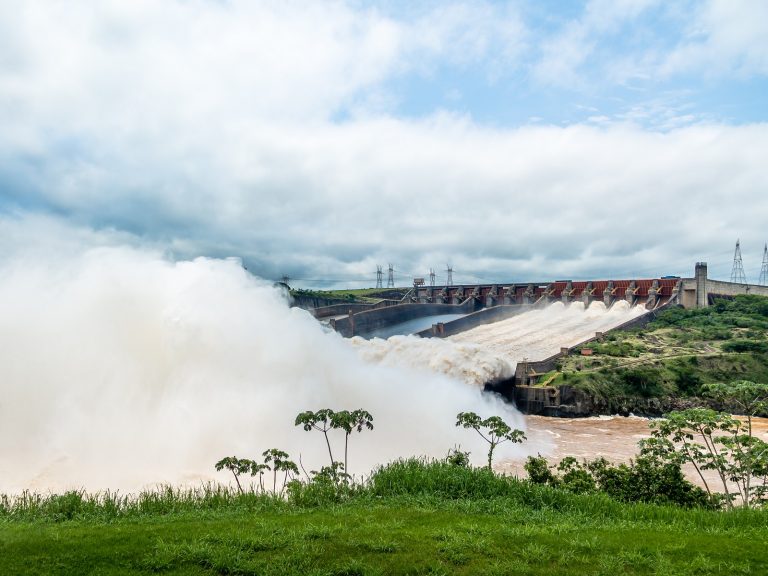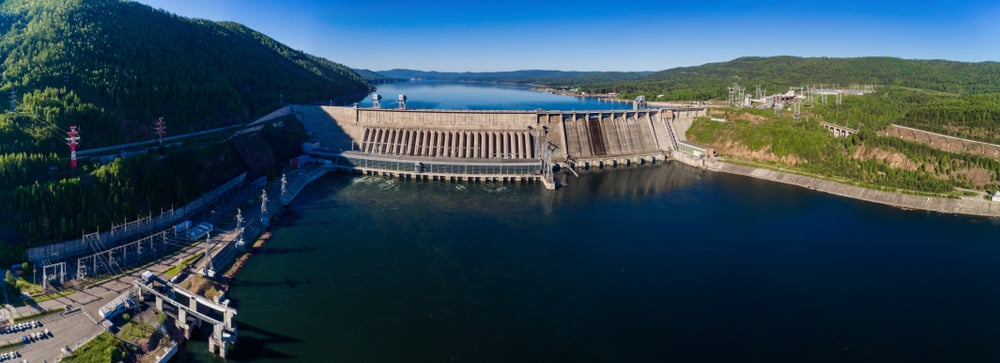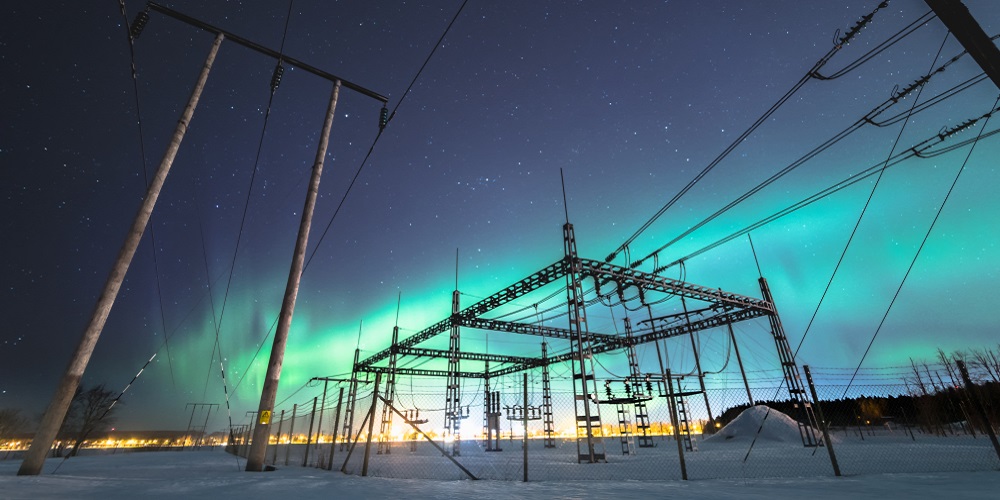How Big Hydro Power Partners With Bitcoin Miners to Prevent Energy Waste
Publikováno: 22.7.2019
 We are often told that the verification of bitcoin transactions eats a lot of energy. The largely inaccurate comparison to a small country, the size of Ireland or Denmark, is evoked thanks to numerous clickbait headlines. What mainstream media fails to explain, however, is that bitcoin mining is actually helping electricity producers prevent energy waste. […]
We are often told that the verification of bitcoin transactions eats a lot of energy. The largely inaccurate comparison to a small country, the size of Ireland or Denmark, is evoked thanks to numerous clickbait headlines. What mainstream media fails to explain, however, is that bitcoin mining is actually helping electricity producers prevent energy waste. […]
The post How Big Hydro Power Partners With Bitcoin Miners to Prevent Energy Waste appeared first on Bitcoin News.

We are often told that the verification of bitcoin transactions eats a lot of energy. The largely inaccurate comparison to a small country, the size of Ireland or Denmark, is evoked thanks to numerous clickbait headlines. What mainstream media fails to explain, however, is that bitcoin mining is actually helping electricity producers prevent energy waste. Hydropower plants, for example, can generate and sell much more electricity during rainy seasons in some regions or when snow melts in others. Wastage can be mitigated through a symbiosis with bitcoin farms, at no additional cost for the environment.
Also read: Three Bank Failures Open New Chapter in Never-Ending Financial Crisis
Plum Rain Brings Life to China’s Mining Industry
During the prolonged winter the crypto industry had to endure, the mining sector saw its profits diminish almost to the point of no return. After another of Bitcoin’s prematurely pronounced deaths turned out to be a false alarm, miners are back exploring business opportunities. The days when mining companies were turning their ASIC rigs into scrap metal are gone.
With spring, prices unseen since last year returned to the crypto markets. In China, which controls a large portion of the global hashrate, the wet season, known in Eastern Asia as the ‘plum rain,’ brought lower electricity rates in provinces with developed hydroelectric infrastructure. The main ingredients in the recipe of profitable mining are back on the table. It’s been reported that miners are once again buying ASICs.

When rain starts pouring in May, rivers and dams in China fill up pretty quickly. Hydroelectric stations reach their peak capacity producing more than local industry and households need. That prompts authorities and utilities in provinces such as the southwestern Sichuan to bring down electricity rates to as low as 0.2 yuan (around $0.03) per kilowatt-hour (kWh), stimulating the consumption of cheap and green energy produced by hydroelectric plants.
Beijing-based Bitmain is among the companies taking advantage of lower electricity prices by utilizing surplus hydro power generated in Sichuan during the spring and summer months. Back in March, Chinese media reported that the mining giant had deployed around 100,000 mining rigs in the region before the start of the rainy season, with plans to install another 200,000 devices within the next few months.
Using hydro power for coin minting, when water levels are at their highest, is a win-win situation for both crypto miners and electricity producers. The cooperation can be highly profitable not only for the bitcoin mining facilities but also for energy companies as it allows them to raise the efficiency of their power generating capacities and ultimately increase their revenue.
Hydropower Plants and Cryptocurrency Miners Mint Coins for Mutual Benefit
Hydroelectric generation provides a great way to use excess power for cryptocurrency mining and also fund renewable energy, commented Shaun Chong, mining product manager at Bitcoin.com. He also acknowledged that mining profitability has improved significantly with rising crypto prices. “Cloud mining sales do a lot better during bull markets,” he said. The Bitcoin.com Pool is in partnership with mining datacenters in the U.S., Sweden and China. Chong noted:
All of them are using hydro power. All our cloud mining is powered by hydroelectricity.
Most mining companies working in Sichuan have direct contractual relations with the hydropower plants they build their farms at, Kirk Su, business development manager responsible for Bitcoin.com’s operations in China, told news.Bitcoin.com. The contracts do provide lower electricity prices for crypto miners. “Everyone gets different rates but they are typically around 0.2 RMB,” Su added. That’s around $0.03 per kWh.
Kirk Su himself runs a mining farm operating in Aba, Sichuan using electrical energy from a 150MW state-owned hydropower plant. His 10MW facility is considered a midsized farm in the province, which is home to 50MW and even bigger farms. “During the wet season, typically from April through November, these power plants will generate much more electricity than the grid needs. Hence, the excess power eventually goes to waste,” the miner explained.

Su noted that most companies in Sichuan work with private power plants as crypto mining in the People’s Republic is still somewhat a grey area. Some mining businesses, however, have managed to establish relations with state-owned enterprises. That actually provides them some protection against potential government crackdowns. On the flip side, these farms are more expensive to build as state enterprises are obliged to meet strict official standards.
Nevertheless, the cooperation is beneficial for both sides. “For the hydropower plant, they get to sell excess energy they wouldn’t be able to transfer to the grid during the wet season. For cryptocurrency miners, it’s obvious – we get cheap power,” Kirk Su pointed out. He further added that Chinese miners prefer to attract power plants as investors in their projects. The participation incentivizes energy producers to protect the mining farms from authorities when needed.
Lack of Predictability Hampers Mining Growth in the East
China, while very important for bitcoin minting at this stage, with its low electricity rates and authorities mostly turning a blind eye to mining, has one serious disadvantage – the lack of long-term predictability. The rainy season comes and goes year after year, but no one really knows when the regulatory storm will begin. The People’s Republic, just like many other countries in the Eastern hemisphere, including the former Soviet republics, offers miners a lot in terms of potential profits. But for many companies with insufficient local connections, the inability to ensure uninterrupted operations for years ahead is a major concern.
Russia, another country with a huge surplus of cheap energy, is also a good example in that respect. The collapse of many heavy industries following the dissolution of the Soviet Union left a third of its power generating capacities idling. Electricity rates in some energy-rich regions like Irkutsk can drop below $0.02 per kWh. The Siberian oblast, where the Angara River flows, is home to a large number of hydropower stations.

The local power company Irkutskenergo, which belongs to the large Russian En+ Group, announced last year a tender to lease five land plots to cryptocurrency mining farms and supply them with cheap electricity. The sites are located at its hydroelectric stations in Ust Ilimsk, Bratsk and Irkutsk, the largest of which has a generating capacity of almost 4,000 MW. En+ held talks with several mining investors in an effort to diversify its customer base. Another major operator, Eurosibenergo, also tried to attract mining businesses to some of its 20 power plants.
The realization of such partnerships, however, is hampered by the lack of a comprehensive legal framework for the growing Russian crypto industry. The adoption of a package of laws designed to regulate the sector has been postponed multiple times. For now, the future of cryptocurrencies in Russia remains uncertain and that applies to the mining sector as well, despite the more positive attitude of authorities in Moscow towards data processing in general.
Not as Simple as Parking a Farm Next to a Dam
This is precisely why Race-Cap, a company with interests in various blockchain-related fields and a partner of Bitcoin.com, has chosen Sweden for its high-performance datacenter and maintains offices in crypto-friendly Zurich as well as the global financial capitals London and New York. News.Bitcoin.com spoke with Race-Cap CEO Arthur Davis about the reasoning behind their preferences for mining destinations.
Davis believes Sweden and the United States are the two most important Western regions where a stable mining operation can be established. In his view, very important considerations when choosing a location suitable to crypto mining are regulations permitting this activity in the first place, favorable public opinion, and a stable tax environment. Next on the checklist are low energy prices and the presence of renewable sources ensuring “the best long-term natural value for all participants.”
Sweden, where Race-Cap has deployed its “Sky Computing” facility, as the entrepreneur calls it, meets these preconditions in one degree or another. Like any other mining hotspot, the Nordic country has its distinctions and they provide bitcoin miners with a different set of challenges in comparison with China. As Arthur Davis puts it:
One cannot simply look at parking an operation next to a hydro dam and thinking all will work well.
Unlike the People’s Republic, the energy system in Sweden is integrated with all power sources – hydro, wind, nuclear – feeding into the common grid. Energy is purchased from the market based on plugging into this grid at three levels of downstream availability, Davis explained. Only a power company may plug into the fourth, national level.
The price of electricity for end users has two components, as is the case in many other European countries. “Transmission” refers to the cost of consumed energy and the cost of “distribution” varies depending on where a consumer plugs into the grid. The higher into the grid the electricity is purchased from a distributor, or the closer to a primary source, the cheaper it is. There are certain advantages to being close to an energy producer. In terms of transmission, electricity is purchased from the open market at floating tariffs and any surplus from hydro sources is reflected in the spot price.

“There are pockets where one could build facilities near primary sources of power. But they are on a case by case basis. Even if power is available near a hydro station, it may be that the grid requires upgrading to take off the power, and this may be a 5 year process to actually be able to draw it down,” Race-Cap’s chief executive noted. “We have looked at a number of sites where the timeframe is 3-5 years to actually obtain the power near a primary power generation and transmission facility.”
The company’s mining facility is situated in Norrsundet, on the coast and in the middle of the country, which is the termination point for a planned enormous offshore wind energy development, which should be constructed in the next few years. Arthur Davis pointed out that Microsoft has recently purchased a big parcel of land to deploy datacenter infrastructure in the region, and Google has also reserved large-scale power in the area.
However, the crypto entrepreneur remarked that the proximity to efficient power generating facilities is not necessarily the only consideration. A decision to build and operate a datacenter should depend on the balance between all factors: “In the far north, where hydro power is plentiful, it may be too cold to properly operate the servers. We have seen other datacenters have significant issue with it being too cold, and therefore capital is required to invest to warm them up, somewhat counterproductive.”
A Government That Realizes Surplus Energy Needs More Consumers
Cold is not an issue in certain parts of South America that are also very rich in water resources and hydropower capacities. While many countries experience energy shortages, Paraguay is one of those producing more than they need. It is home to the world’s most powerful hydroelectric plant, built at the Itaipú dam on the Paraná River, which generates over 100 terawatt-hours of electricity annually. Another large hydroelectric power station is operating at the Yacyretá dam built over the waterfalls of Jasyreta-Apipé. The country currently uses only about half of the electricity the two power plants can produce.

Unlike other nations, the Paraguayan government has realized the benefit of having bitcoin farms next to its hydroelectric stations. A deal with two crypto companies aims to prevent energy waste. Bitfury Group, and the Korea-based Commons Foundation, announced earlier this year their new partnerships to create and operate mining facilities powered by the hydroelectric energy from the plants at the two dams. Authorities in Asunción have promised to provide five sites for the project.
Do you agree that energy producers and crypto mining companies should cooperate more closely to utilize surplus hydro power that would otherwise be wasted? Share your thoughts on the subject in the comments section below.
Images courtesy of Shutterstock.
Do you want to maximize your Bitcoin Mining potential? Plug your own hardware into the world’s most profitable Bitcoin mining pool or get started without having to own hardware through one of our competitive Bitcoin cloud mining contracts.
The post How Big Hydro Power Partners With Bitcoin Miners to Prevent Energy Waste appeared first on Bitcoin News.